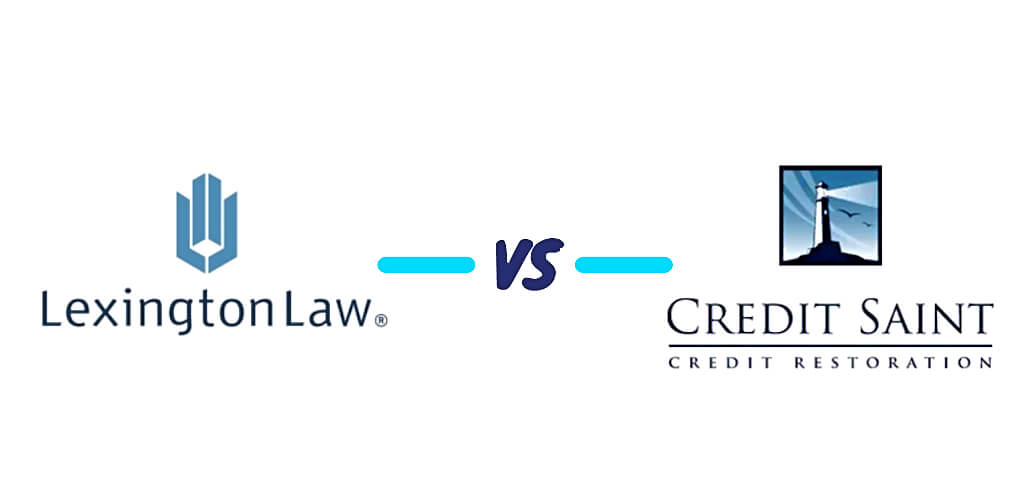Why Did My Credit Score Drop?
Disclaimer: We offer completely free content to our users. However, articles or reviews may contain affiliate links and we may earn a commission. Learn more about how we make money.
Why did my credit score drop? First, let’s understand how credit scoring works before looking at factors that result in a score decrease.

Lenders face one big problem — how to accurately assess the risk associated with lending to new consumers. Credit reporting bureaus (CRBs or CRAs) help solve this question. They gather information on active consumer credit accounts. And make it available in the form of reports.
Later a bank can check the reports and see the customer’s behavior on active and closed credit accounts. They can check the entries to determine creditworthiness or trustability.
Now, reports contain a lot of information. According to Experian, the average citizen holds four credit cards. Analyzing thousands of reports to pre-approve customers means wasting time and resources.
Since 1989 credit report scoring has streamlined the approval process. Scoring companies such as FICO or VantageScore develop formulas that generate one score. It predicts the probability of the borrower becoming late on payments for 90 days or more.
Scores predict risk, which helps lenders reduce defaults and stay profitable. For instance, FICO® promoted its latest scoring model, ‘Score 10,’ as having the ability to reduce auto loan defaults by 9%.
We now know the essence of scores. Now, let’s see the reasons your credit score goes down, why it happens, and what to do about it.
- Increases in the credit utilization rate
- A recent large purchase using the credit card
- Presence of new errors in the reports
- Cases of fraud or identity theft
- A missed or late payment
- Paying off a credit account and closing it
- Canceling an old credit card or account
- Recent loan application and hard inquiries
- Conclusion
Increases in the credit utilization rate
Wondering why the credit score dropped for no reason? You never applied for new loans or fell behind payments. So, what’s causing this mysterious drop? Your cumulative credit utilization rate (CUR) may have increased. What is the CUR, and how does it work?
Explanation
Lenders grant a spending limit on revolving credit types such as credit cards or lines of credit. For instance, if a card has a spending limit of $10,000 and the balance is $3,000, its CUR rate is:
($3,000/$10,000) x 100% = 30%.
The scoring algorithm may reward more points if the CUR is below 30%. A higher rate may mean:
- A tendency to overspend or carry high balances
- Not paying down balances
It is perfectly okay to have a higher balance. But keeping it below 30% is viewed as positive credit behavior. After getting a credit card, the trick is to use it in a way that shows you don’t need it.
What to do about it?
Bring down the CUR percentage by making a larger payment towards the outstanding debt.
A higher CUR is not always caused by spending beyond the 30% mark. Credit card companies reduce spending limits on cards all the time. For instance, they may reduce exposure during times of economic uncertainty. Following long periods of inactivity, about 12 months, they may close accounts.
You may also ask for a higher limit. Opening new credit card accounts might help. But avoid carrying high balances on new cards as it will affect the cumulative CUR.
Going forward, closely track the total balance and the allowed limit. There is potential to earn even more credit points by keeping the rate below 10%.
A recent large purchase using the credit card
Credit card companies incentivize customers to make large purchases with their cards. They may offer signup bonuses or a chance to earn reward points.
The company may even offer a 0% interest waiver to sweeten the deal. But using the card for large purchases may cause a credit score decrease.
Explanation
Purchasing large ticket items with a credit card is not seen as risky behavior. But the large purchase may have increased the credit utilization rate.
What to do about it?
First, plan to make a bigger payment towards the outstanding balance. If a large payment is not manageable, make several smaller payments during the billing cycle. Asking for a limit increase is another viable solution, but not our most recommended.
Presence of new errors in the reports
Grievous errors may cause a sudden drop in the credit score. And credit report mistakes are more common than you think. Estimates reveal that over 70% of credit reports have at least one error. They may lead to unexpected score decreases, even if you don’t have active credit accounts.
Explanation
Errors arise during the reporting process. CRBs rely on collection agencies and credit companies to report accurate data. The CFPB listed the common errors that consumers should regularly check for:
- Entries arising from accounts belonging to people with similar names;
- Creditors reporting closed accounts as “open;”
- Multiple occurrences of the same account in reports;
- Incorrect outstanding balances & credit limits;
- Wrong addresses and personal information, such as incorrect house numbers.
What to do about it?
The first process in credit repair is to order copies of the three reports. Access free reports weekly from annualcreditreport.com as part of the Covid-19 initiative. Next, scrutinize each entry to gauge its accuracy and completeness of the information. After discovering errors, there are two options:
- Work with credit repair companies: Most firms offer a free consultation. They help in identifying reporting errors and ease the dispute process. Customers also gain extra services, like creditor interventions and debt validation. Some firms also offer ID protection and report monitoring during the membership.
- Challenge the CRBs without any help: Find out how to write a 609 dispute letter. Consider filing disputes online for a faster process.
Once the CRBs receive the dispute letter, it takes up to 30 days to investigate the claims. The process entails reaching out to the original lender to validate entries. For a higher chance of success, supply any evidence to support challenges.
Repair agencies don’t guarantee faster removals. But customers prefer working with experienced experts. They are knowledgeable about each aspect of the process.
Choosing a trusted company will be key. Consider proven firms such as Lexington Law, Sky Blue, or Ovation Credit.
Cases of fraud or identity theft
Why did my credit score go down when nothing changed? Credit fraud may be to blame. It entails someone using stolen credentials to apply for loans.
The scammers target payday lenders who don’t conduct comprehensive identity checks. Short-term lenders don’t report to CRBs. But if the customer defaults, they hand the case to collection agencies who report the defaults to the CRBs.
Explanation
Identity thieves get personal information by employing certain tricks. They may use online exploits such as phishing and hacking.
But keep your guard up. Some scammers prey on unsuspecting neighborhoods. They may drive around and steal mail from the mailbox. Some gain access to bank account statements or utility bills.
According to the FTC, identity theft reports doubled from 2019 to 2020. About 7 – 10% of the total population falls prey to identity theft schemes each year.
What to do about it?
Order free credit reports from annualcreditreport.com and check for incidences of fraud. Next, contact the company affected by the scheme. For instance, report credit card fraud immediately to have the card blocked.
Place a fraud alert on your credit report by contacting any of the bureaus. It makes it difficult for the identity thief to apply for new accounts under the stolen name. This protection lasts for one year.
Going forward, consider obtaining credit monitoring and ID protection services. Monthly subscriptions typically start from $10. The privacy protection companies monitor the Dark Web to match stolen identities. Customers often get a $1 million credit insurance cover.
A missed or late payment

Why did my credit score drop 50 points or more? Late or missed payments could be the culprits. Lenders will report payments that are late for more than 30 days.
Scoring models place a lot of emphasis on the customer’s repayment history. A fresh late payment may decrease FICO® credit scores by up to 180 points.
Explanation
The late payment may have resulted from genuine reasons, perhaps the loss of a job. They may be also caused by reporting errors. For instance, if the lender reported the late payment before 30 days were over.
What you can do about it?
Many people ask: “Can I ask a lender to remove the late payment?” Yes, this is one of the best ways to remove genuine late payments.
Write a Goodwill Letter or call the company reps. Explain the situation and promise to honor future payments on time. But, if possible, prevent late payments from the onset.
Setting up autopay, for instance, helps prevent missed payments. Also, budget enough money for any upcoming bills. When late, don’t ignore the creditor’s calls. Speak to them and resolve the situation.
Paying off a credit account and closing it
Paying off a loan and closing the account may lead to a score decrease. That’s particularly true for customers who have a “thin credit file.”
Explanation
CRBs and creditors all generate data from open and active credit accounts. People without past credit reports are in fact labeled as “unscorable.”
The FICO® scoring model takes into account the types of open accounts: “The customer’s credit mix.” It needs to be diverse to contribute to higher scores, for instance, a combination of installment, mortgage, or credit card accounts.
After paying off debt, closed accounts don’t generate any credit information, impacting the credit mix. That’s the reason that scores may have decreased.
What to do about it?
It’s not possible to leave certain accounts open after paying them off. For instance, after paying off car loans, installments, or personal loans, the accounts must be closed, regardless of the potential harm.
Fortunately, it’s easy to recover. What’s more, accounts closed in good standing boost the score for up to 10 years.
The CRBs have tried to provide solutions to customers caught in this dilemma. Experian’s Boost program allows customers to add bill payments to their reports and improve their credit history.
Canceling an old credit card or account
The average age of active accounts contributes up to 15% of the FICO score. Creditors consider people with longer credit track records as having lower risk. It’s part of the reason that scores may improve as you age. Older Americans generally have higher scores than the rest of the population.
Explanation
Closing an older account reduces the average credit length, which may be why the credit score went down. Older accounts show that a person has good experience managing debt.
What to do about it?
Should I keep using an old credit card if I don’t need it? No, there are valid reasons to close an old account. For instance, to save on high yearly fees.
Customers who have trouble managing cards are advised to limit their use. If you have a thick file, it can cushion the impact of closing an old credit card account.
People who are not planning to apply for other loans can also close their old accounts. Other accounts may age and bridge the gap.
But consider keeping an account open if it doesn’t have high fees. Just keep the credit utilization rate low by only making small charges. Consider paying balances in full to reduce interest charges as well.
Recent loan application and hard inquiries
Did the credit score drop after buying a car or obtaining a personal loan? Well, getting pre-qualified for a loan doesn’t impact scores if the lender performs a soft check. But getting pre-approved often involves a hard check. That’s because the lender is seriously considering whether to issue the loan.
Explanation
Hard inquiries are negative entries. But don’t worry! They reduce scores by up to five points, and people with high credit scores may have fewer points removed.
Accumulating several hard inquiries within a short time may cause more harm. The rationale behind this is that the borrower is desperate for financing and can’t find it. Hence, the need to apply to many lenders appears.
What to do about it?
It’s not possible to challenge and remove legitimate hard inquiries. They will remain on the report for 24-months but only carry weight for the first 12 months.
Consider applying for loans that only require soft checks for pre-qualification. Hard checks within a span of 14 days are treated as one entry — alternatively, space credit applications by up to 30 days.
Conclusion
We’ve learned that the credit score is a measure of how risky a lender considers a borrower. A wide range of risk factors influences it. Scoring companies don’t disclose all the factors that lead to a decreased score. The simple fact that one company may be using an older scoring model may result in reduced scores. That’s because, like the iPhone, scoring companies keep releasing new and better upgrades.






